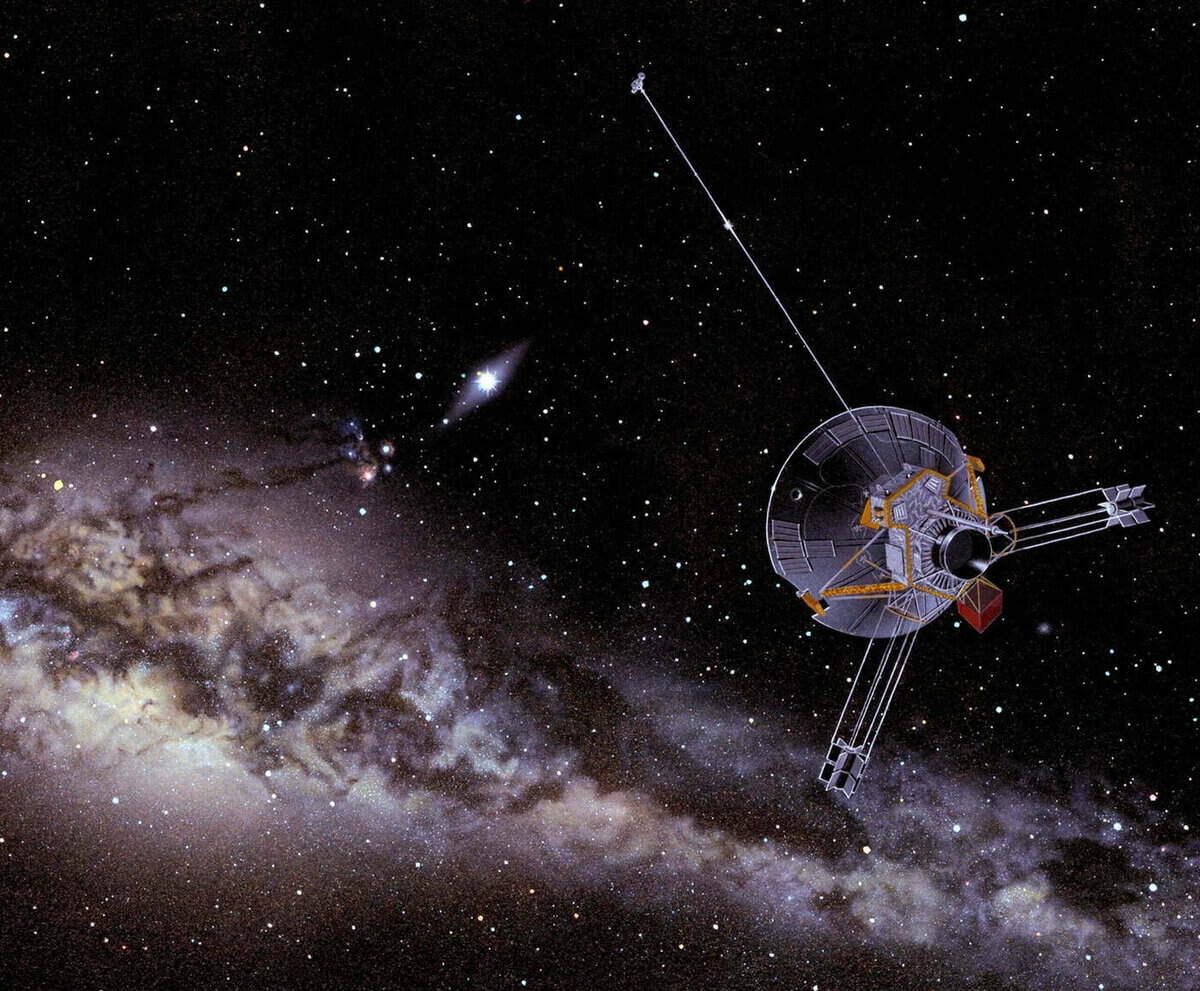It was 65 years ago, precisely on October 4, 1957, when the USSR took the lead in launching the first ever man-made satellite into Earth’s orbit. This groundbreaking achievement not only marked the dawn of the space age, but also triggered a fierce competition for space supremacy between the Soviet Union and the United States. Moreover, it paved the way for the utilization of space for defense purposes. The launch of the inaugural satellite, known as Sputnik-1, was deliberately timed to coincide with the Day of the Space Forces, a relatively new division of the Russian Army. What motivated Sergei Korolev to independently decide on launching the satellite, and how did the flight of Sputnik-1 unfold? Find out more about this historic event in the comprehensive coverage provided by REN TV.
On October 4, 1957, the first man-made satellite, “Sputnik-1,” was launched into Earth’s orbit. The PS-1 was launched from the Tyura-Tam test site (now Baikonur Cosmodrome) by the USSR Ministry of Defense using a R-7 launch vehicle. The satellite had several objectives, including testing the technical capability of the vehicle and verifying the launch calculations. It also aimed to study the ionosphere by examining the interaction of radio waves emitted by the satellite from space as they traveled through the atmosphere to Earth’s surface. Additionally, the satellite was used to calculate the density of the upper atmosphere by observing its deceleration. Lastly, it aimed to investigate the effects of outer space on hardware and determine optimal conditions for hardware operation in space.
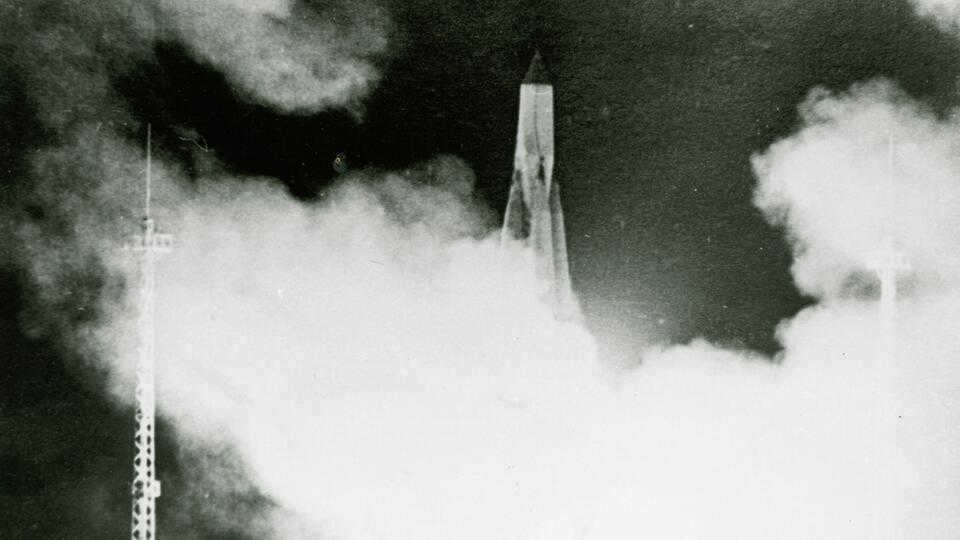
The initial satellite lacked any scientific apparatus, but its launch yielded not just crucial technical information crucial for further advancements in onboard equipment, satellite communication systems, and control complexes, but also valuable scientific data. Specifically, the data derived from observations of the first satellite’s movement and the parameters of its radio signals proved highly beneficial.
The inaugural flight of the Earth’s first satellite signified the dawn of the space era, igniting the space race between the Soviet Union and the United States.
Origin of the First Earth Satellite
The inception of the inaugural Earth satellite was spearheaded by Mikhail Tikhonravov, while the development of the launch vehicle and the subsequent orbital deployment of the satellite was overseen by Sergei Korolev. Additional contributors to these groundbreaking projects included Mstislav Keldysh, Nikolai Lidorenko, Mikhail Ryazansky, Oleg Ivanovsky, Gleb Maximov, Vyacheslav Lappo, and Konstantin Kringauz.
The development of the inaugural man-made satellite of the Earth was initiated in November 1956. Its design entailed equipping the vehicle with a pair of radio beacons to facilitate the measurement of trajectory. The selection of the satellite’s transmitter frequency ranges (20 MHz and 40 MHz) was driven by the objective of ensuring compatibility with the existing radio equipment used by amateur radio operators, thereby eliminating the need for equipment upgrades. The trajectory for orbit insertion was initially computed using electromechanical counting machines, with the electronic counting machine being reserved for the final stages of calculation.
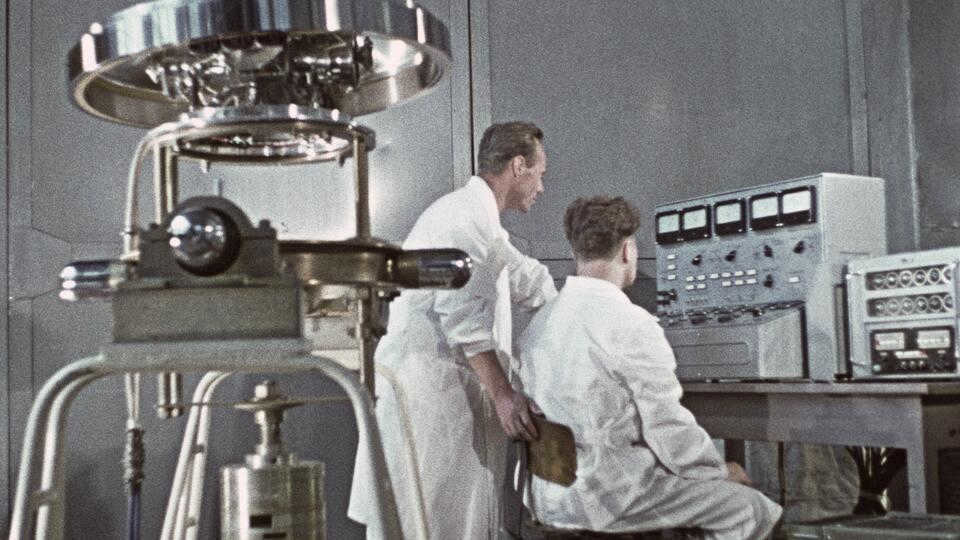
Experiments conducted on Sputnik-1
In early September 1957, the “Simple Sputnik-1” underwent its final tests on a vibration testing platform and inside a thermal chamber. By September 22, the R-7 rocket had arrived at Tyura-Tam. This particular rocket had been modified to be lighter than the standard version. The original bulky head section was replaced with a transition piece for the satellite, the radio control system and one of the telemetry systems were removed, and the engine shutdown automation was simplified. These modifications resulted in a seven-ton reduction in the rocket’s overall mass.
The Launch and Journey of Sputnik-1
At 22:28 Moscow time on October 4, 1957, the rocket carrying the satellite embarked on its mission. After 295 seconds, the rocket’s central unit and the satellite entered an elliptical orbit around the Earth. Just 20 seconds later, Sputnik-1 separated from the rocket and emitted repeated “beep-beep” signals, which were tracked until the satellite disappeared from view over the horizon.
Despite facing challenges such as a delayed engine and a malfunctioning tank emptying control system that resulted in increased kerosene consumption and an early shutdown of the central unit engine after only 16 seconds, Sputnik-1 managed to achieve its objective. It successfully entered an elliptical orbit, where it remained for a remarkable 92 days.
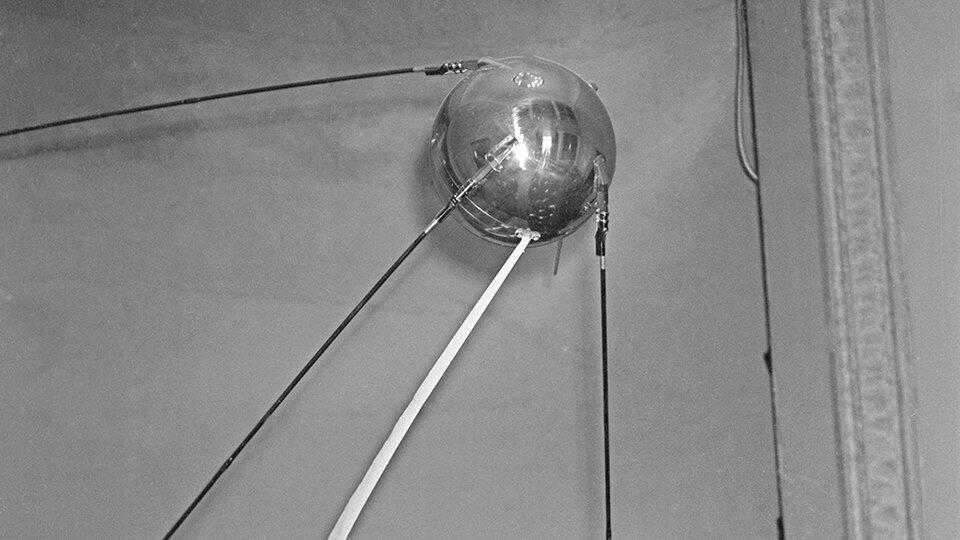
“The first man-made satellite of our ancient planet may have been small, but its distinctive call signs reverberated across all continents and among all peoples, symbolizing mankind’s audacious dream,” remarked Sergei Korolev.said Sergei Korolev.
After experiencing a decrease in velocity due to atmospheric friction, Sputnik-1 began its descent and ultimately disintegrated in the dense layers of the atmosphere.
Interesting facts about the initial man-made Earth satellite
- The first man-made satellite of the Earth remained in orbit for a duration of 21 days, specifically from October 4 to October 25. It successfully stayed in space for a total of 92 days, completing 1440 revolutions around our planet.
- The launch of this groundbreaking satellite set a new speed record for jet spacecraft, reaching an astonishing velocity of over 28,565 km/h. Additionally, it also achieved a record payload mass of 83.6 kg that was successfully placed into orbit by an ISV.
- In the early days, calculating the coordinates of the satellite with respect to time took scientists approximately 30-60 minutes. However, with the advent of computer technology, these calculations can now be done in just 1-2 seconds.
- The commencement of the space race ultimately led to the creation of NASA by the United States as they sought to compete in this new frontier.
- The launch of Sputnik 1 had a significant impact on the advancement of the Internet: the U.S. Department of Defense expedited the development of the ARPANET packet-switched telecommunications network;
- Kaluga, known as the birthplace of cosmonautics, proudly displays the image of Sputnik-1 on its flag;
- Following the successful launch of the first ISIS, the Russian term “sputnik” (meaning satellite) became widely adopted in numerous languages across the globe.
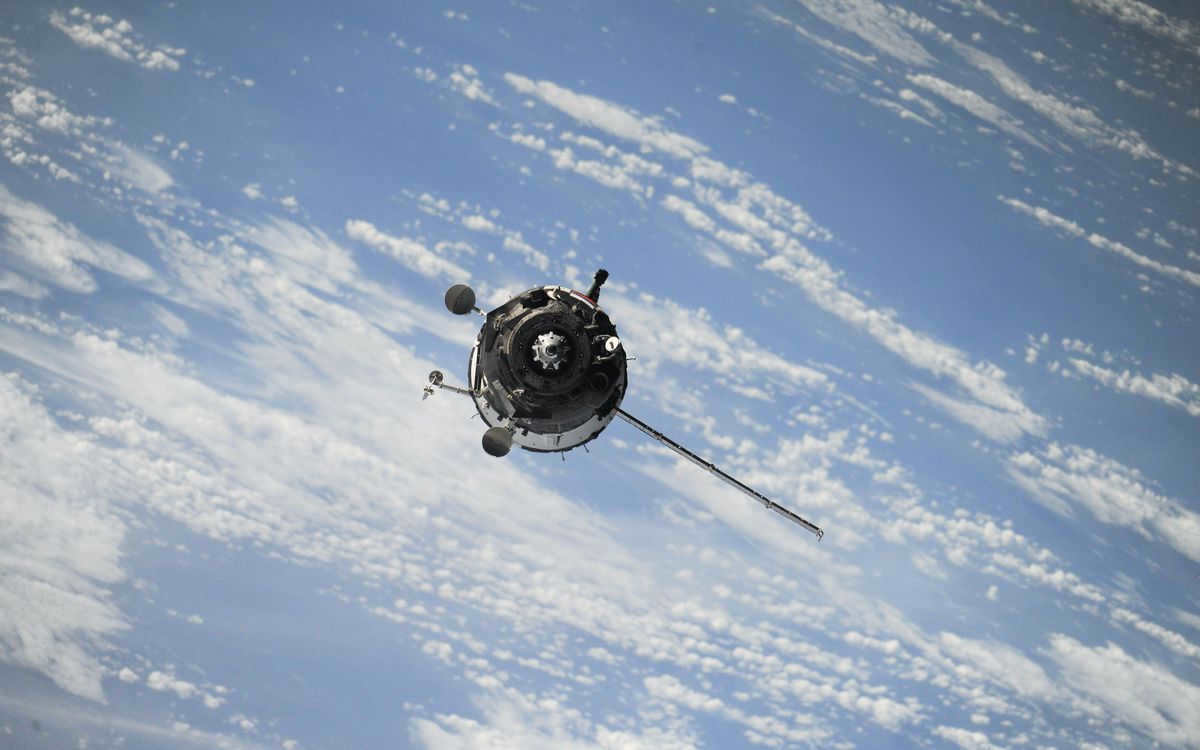
On October 4, 1957, Soviet scientists, led by Sergei Korolev, successfully launched the first ever artificial satellite into Earth’s orbit. Over the course of 92 days, the satellite completed 1,440 revolutions around the planet, allowing for groundbreaking research on the ionosphere and providing crucial insights for future space missions. Today, there are nearly 5,000 active artificial satellites in operation. RBC Trends explores the evolution of satellites over the past 65 years and their current significance.
"Sputnik-1" was the very first satellite to orbit the Earth, making it a historic milestone for humankind. It was also known as PS-1 (Simple Satellite No. 1). The satellite was shaped like a ball made of an aluminum-magnesium alloy, weighing 83.6 kg and measuring 58 cm in diameter. The ball consisted of two hemispheres that could open, allowing access to the satellite’s interior. Although it didn’t carry any scientific instruments, it did have temperature and pressure sensors. Additionally, it was equipped with a four-antenna radio transmitter that emitted short pulses at wavelengths of 20.005 and 40.002 MHz. These radio transmissions enabled astronomers and radio engineers to calculate the satellite’s flight parameters. Inside the satellite, there was also a power system weighing approximately 50 kilograms. Remarkably, the entire device was designed and developed in under a year.
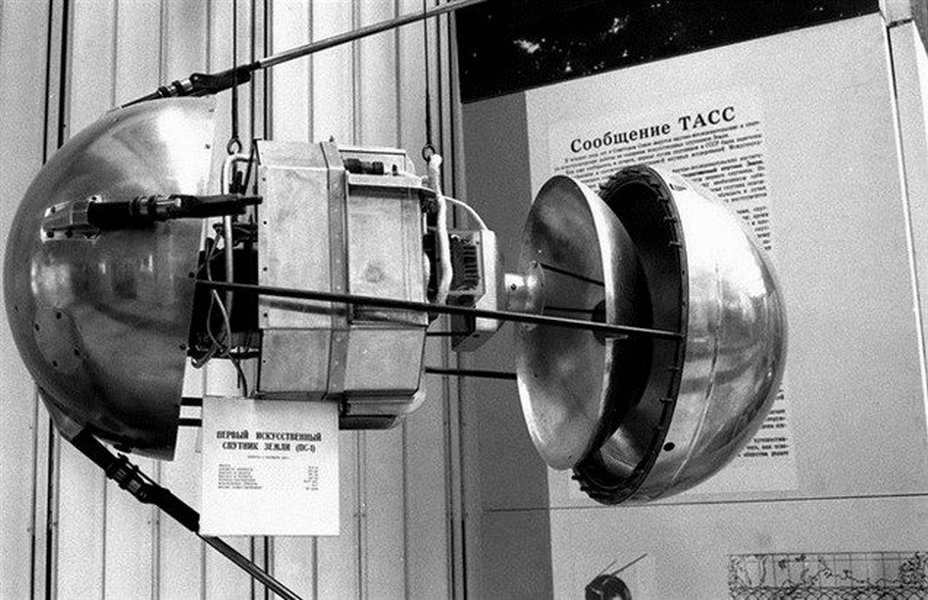

An exhibition is showcasing a replica of the first artificial Earth satellite, marking the 40th anniversary of its historic launch (Photo: kosmoved.ru)
Just 32 days after its initial launch, the Soviet Union successfully sent Sputnik-2 into space, with a remarkable passenger on board – the courageous canine, Laika. The spacecraft itself was in the shape of a cone, standing at a height of 4 meters and boasting a base diameter of 2 meters. Weighing in at approximately 500 kg, this capsule was equipped with the Tral telemetry system, which allowed for the transmission of both engineering and biological data. During each revolution, the spacecraft communicated for a 15-minute interval. Additionally, Sputnik-2 housed two photometers, which were responsible for measuring solar radiation, including ultraviolet and X-ray radiation, as well as cosmic ray parameters. The valuable readings gathered by this remarkable satellite brought us closer to the discovery of the outer Van Allen radiation belt, particularly in the Earth’s northern latitudes.
Introduction of the First Weather Satellite
In 1960, the National Aeronautics and Space Administration (NASA) achieved a significant milestone by successfully launching Tiros-1, the world’s first operational weather satellite. This groundbreaking satellite revolutionized the field of meteorology by providing invaluable insights into Earth’s cloud cover and the ability to detect and track hurricanes.
Tiros-1 featured a unique design, with its body shaped like an 18-sided prism. It relied on solar cells and a nickel-cadmium battery for power. The satellite was equipped with two vidicons, including a wide-angle and a narrow-angle camera. These cameras captured images that were either transmitted to a ground receiving station or stored on an onboard tape recorder when the satellite was out of range. Tiros-1 successfully operated from April 1 to June 15, 1960, and continues to orbit the Earth to this day.
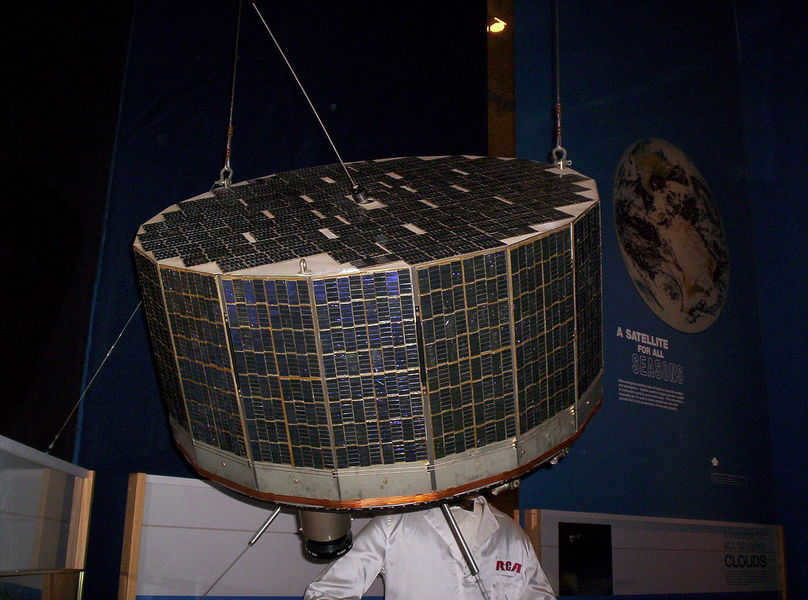
The inaugural telecommunication satellite
In 1962, NASA successfully deployed Telstar-1, marking the launch of the world’s first telecommunication satellite. This groundbreaking achievement facilitated the historic live broadcast of television images between the United States and Europe. The transmission was made possible through the utilization of a 53-meter ground antenna, expertly crafted by AT&T Corporation. Telstar-1, a sphere-shaped satellite, boasted a weight of 78 kilograms and harnessed the energy of 3,600 solar cells. Its operational functionality was enhanced by an active repeater, which magnified the signal power by an astounding factor of one hundred.
The Telstar-1 satellite was operational for a brief period of seven months before being decommissioned due to the testing of US Starfish Prime nuclear warheads in space. Despite its non-functionality, the satellite continues to orbit the Earth. This successful spacecraft launch played a pivotal role in the establishment of the International Global Satellite Consortium (Intelsat), an organization responsible for operating a network of communications satellites that facilitate international broadcasting services.
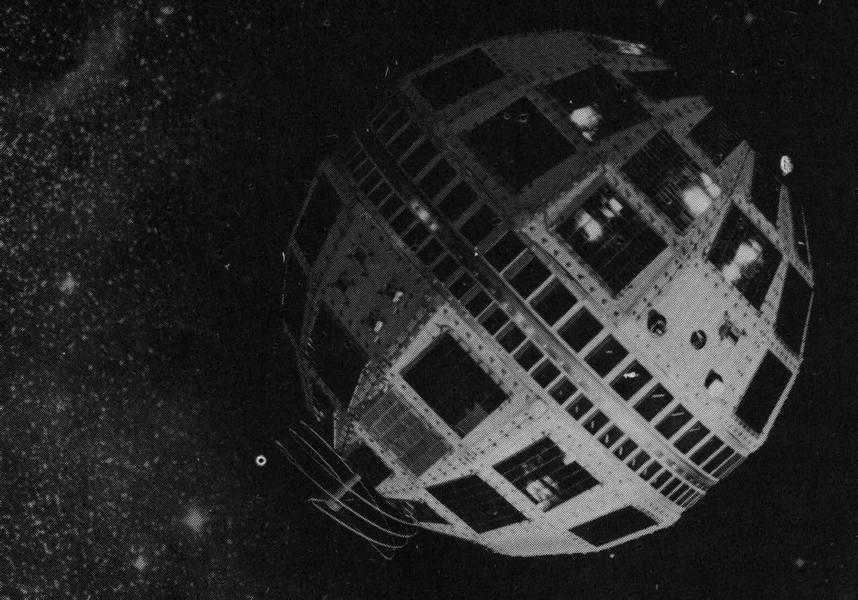
Contemporary communication satellites, like SpaceX’s Starlink network, offer internet connectivity to underserved areas across the globe.
The inaugural geodata satellite
NASA launched the first satellite, Landsat-1, in 1972 to conduct a comprehensive study of Earth’s resources. This groundbreaking satellite was constructed using a weather satellite platform and featured two advanced instruments for monitoring purposes. The American Radio Corporation developed a Return Beam Vidicon camera system, while the Hughes Aircraft Company contributed a multispectral scanner. The MSS instrument, with its four spectral bands including green, red, and two infrared bands, played a crucial role in recording essential data. To facilitate data collection and transmission, the satellite was equipped with a Data Collection Subsystem (DCS) that gathered information from remote ground stations and sent it to central detection stations. Additionally, the satellite featured two wideband video recorders capable of storing up to 30 minutes of scanner or camera data. In terms of specifications, the satellite weighed 953 kg and measured 1.5×3 m.

Landsat-1 worked for a period of time until January 1978, surpassing its intended lifespan by five years. During its operation, the satellite acquired imagery of various landscapes, including forests, urban areas, and bodies of water on our planet. In order to monitor both natural and man-made alterations on Earth, NASA initiated the extensive Landsat program, which has been active for over four decades. As of now, the Landsat-9 satellite is in space, equipped with advanced optical and thermal sensors to capture high-quality images.
In 1974, the US Department of Defense collaborated with NASA to launch the NTS-1 satellite as part of the NavStar program (NAVigation System with Time And Ranging). NTS-1, which stood for “Time And Ranging Navigation Satellite,” weighed 293 kg and featured four deployable solar panels for power. It also included quartz and rubidium signal generators. This satellite transmitted a microwave signal from space, allowing a receiver on Earth to determine its real-time position using three coordinates. Eventually, the NavStar program was rebranded as GPS (Global Positioning System).
The year 1994 marked the activation of the initial fleet of 24 geostationary satellites, forming the first GPS constellation. The information provided by these satellites has proven invaluable not only in navigation and defense, but also in various other fields such as telecommunications, geodesy, and cartography. Looking ahead to 2022, the U.S. Air Force has made significant advancements with the introduction of the NTS-3, a next-generation GPS satellite. Notably, this satellite boasts the ability to be reprogrammed while in orbit to cater to different requirements. Furthermore, it is equipped with a reinforced antenna array, allowing for precise adjustments to the power of its signal.
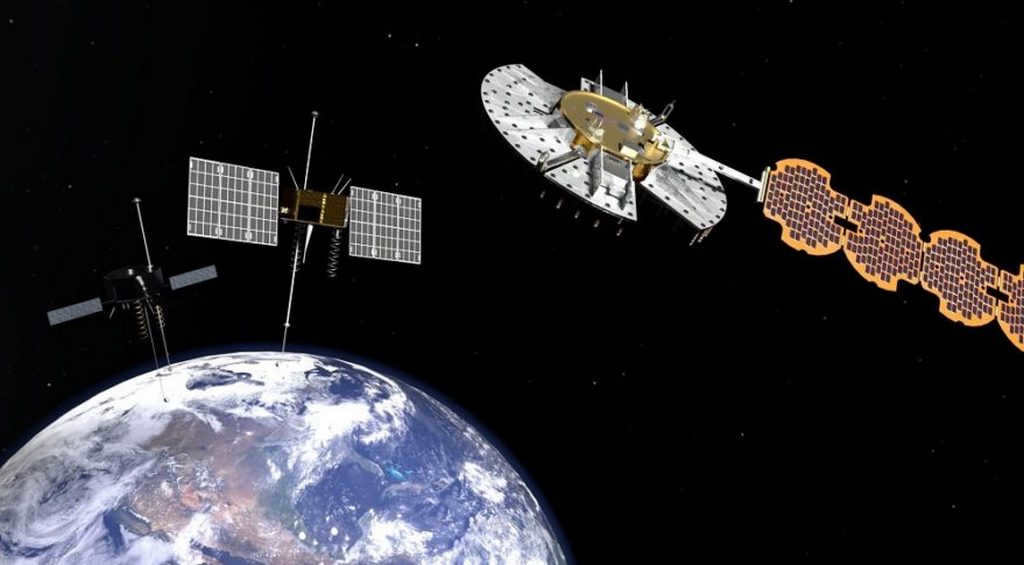
Small satellites
In the year 1999, Professor Jordi Puch-Suari from California Polytechnic State University and Bob Twiggs from Stanford University introduced the concept of the CubeSat reference design, which is a compact satellite used for space exploration. It is composed of multiple cubic modules that measure 10 cm x 10 cm x 10 cm and have a maximum weight of 1.33 kg each.
The first usage of CubeSat was in NASA’s Ames science mission. In 2006, the team of Biological CubeSat launched the GeneSat-1 satellite for the purpose of conducting biological experiments in space. In this way, the CubeSat was responsible for transporting biological samples to space in order to analyze the effects of weightlessness on human muscle degradation. Instead of being brought back to Earth, the satellite utilized sensors to collect information about the samples’ condition and transmitted it back. Another significant application of the mini-satellite occurred in 2018 when it was employed in the Mars InSight interplanetary mission. Specifically, two MarCO A and B cubesats were utilized as communications relays for the landing module when it successfully touched down on the Martian surface.
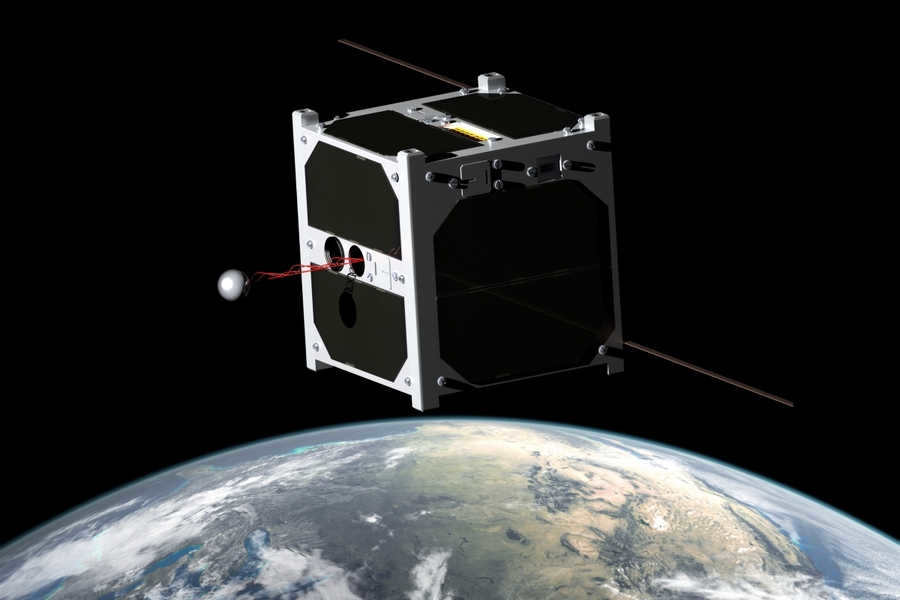
Furthermore, the cubesat has the potential to be outfitted with a self-portrait camera, a solar sail, flash memory for remote data storage, signal receivers, and various other equipment. With the advancements in 3D printing technology, the manufacturing costs of compact satellites are decreasing, allowing them to tackle a broader spectrum of missions.
Nanosatellites
In 2011, Zach Manchester, a scientist from Stanford University, introduced a concept of a minuscule femtosatellite named KickSat. This innovative device is essentially a cubesat that can accommodate a hundred sprites – computer boards equipped with an antenna, each capable of functioning as a microsatellite. To fund the production of these programmable boards, Manchester has initiated a crowdfunding campaign on Kickstarter, making this affordable device accessible to a wider audience. Despite its potential, the KickSat has only been successfully launched into space on two occasions.
What type of satellites will exist?
Featuring environmentally friendly engines
Currently, satellites predominantly employ electric engines; however, developers are proposing alternative options that are more eco-friendly, such as electromagnetic, nuclear, solar, water, laser, and even iodine engines.
One notable example is Aliena, a startup based in Singapore, which manufactures compact, eco-friendly propulsion systems called the MUSIC Electric Propulsion System. These plasma-powered engines enable operators of small satellites to significantly decrease their fuel consumption, contributing to a greener approach in space exploration.
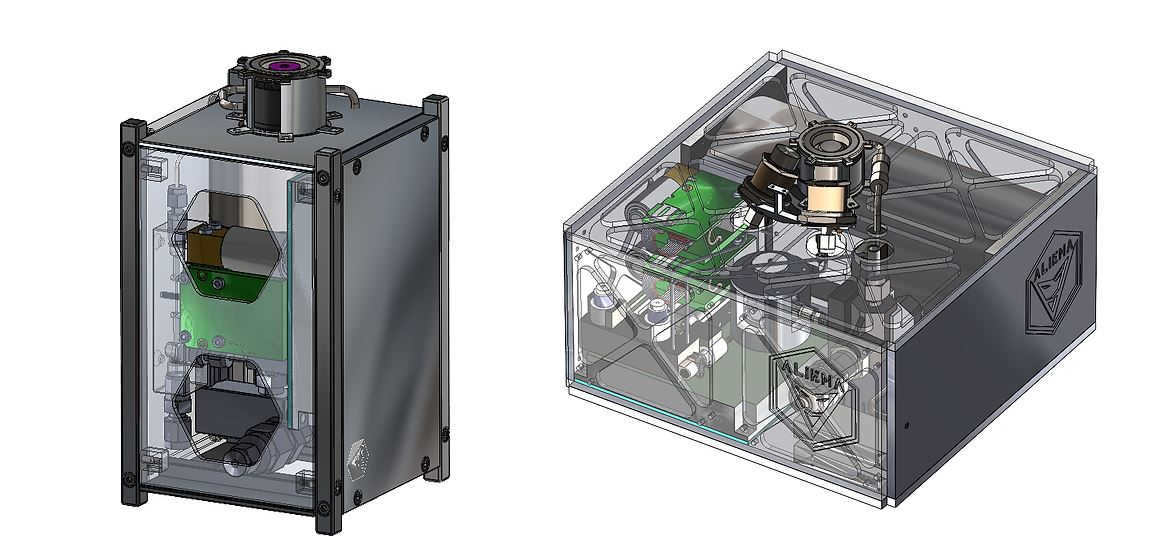
ThrustMe, a French company, has been conducting tests on an iodine-powered engine as a potential replacement for xenon in propulsion systems. Xenon, a rare gas with limited thrust capabilities, is being phased out in favor of the more compact and simplified design of the NPT30-I2 engine. This new engine eliminates the need for gas tanks, pressure control systems, and other complex technologies. So far, the company has successfully tested the NPT30-I2 engine in Earth’s orbit.
The demand for mobile and broadband communications via satellites is on the rise, prompting service providers to find ways to enhance their satellite capacity. These companies are implementing cutting-edge repeaters that can transmit data at speeds of several hundred gigabytes or even terabytes per second. Additionally, they are introducing upgraded antennas, enabling satellites to operate in the Ku and Ka frequency bands, which offer higher signal throughput. This technology is exemplified by Starlink satellites, which can already connect users to the Internet in remote land, water, and airborne locations.

Cesium Astro, a startup based in the United States, has created the Vireo active phased array system specifically designed for satellites that have limitations in terms of size, weight, payload, and cost. The active phased array technology allows for each element of the system to have its own miniaturized transmitter and receiver. By implementing this solution in the satellite antenna, it becomes possible to have better control over power consumption and overall performance of the satellite constellation.
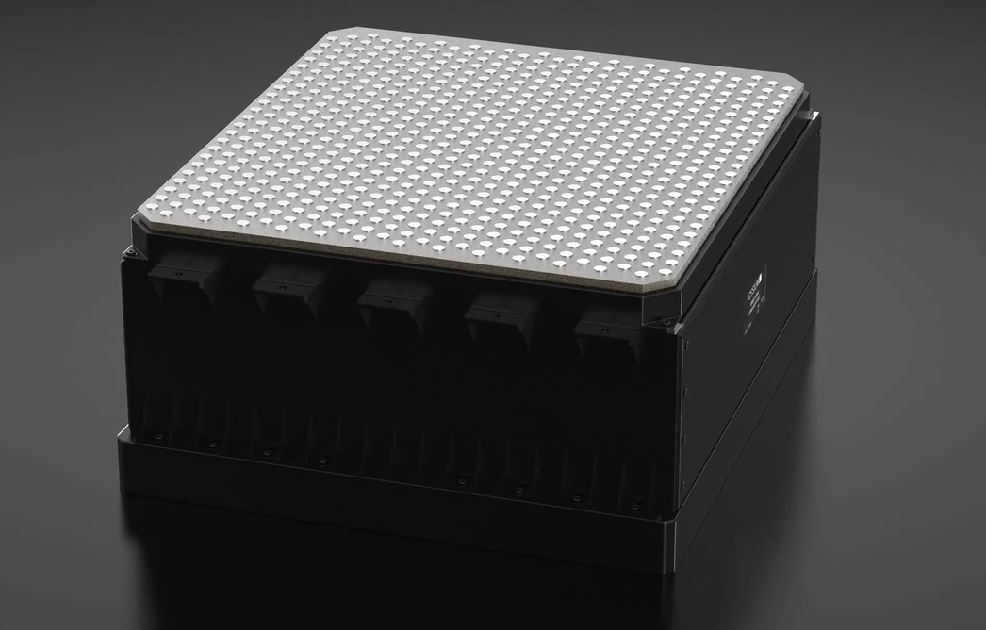
Sailing through Space
Since 2015, NASA has been conducting tests on a revolutionary satellite propulsion technology known as the solar sail. As part of the Advanced Composite Solar Sail System program, the agency has developed a deployable sail design that harnesses the power of sunlight to propel satellites. This innovative approach eliminates the need for traditional rocket fuel during satellite launches. The sail’s booms are constructed using carbon fiber composites, making them lightweight and durable. This groundbreaking technology could be utilized for a range of missions, including space weather monitoring, asteroid exploration, and communication support for manned research expeditions. The first launch of a cubesat equipped with a solar sail is slated for early 2023.
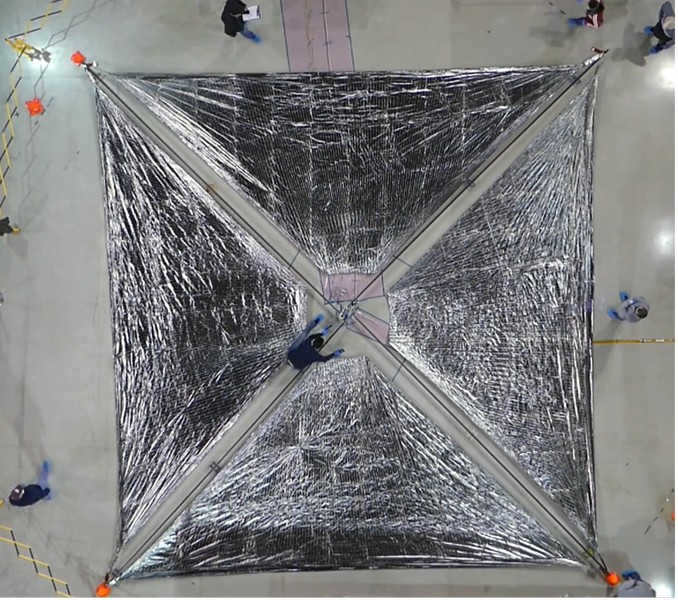
Made from durable materials
In the coming years, NASA plans to launch a satellite servicing robot (OSAM-1) into Earth’s orbit to refuel the Landsat-7 remote sensing satellite. The OSAM-1 robot will utilize a robotic arm to carefully cut through insulation and loosen a single bolt in order to replenish the vehicle with hydrazine fuel, a more environmentally friendly type of rocket propellant. If the mission is successful, this robot could potentially maintain the operation of satellites in orbit without the need for astronauts. Furthermore, the robot itself is designed to have a longer lifespan than initially planned, allowing for regular trips to orbit and back to Earth.
Eco-friendly Materials
For over fifty years, satellites have primarily been constructed using aluminum, which, while durable, is not environmentally friendly and can be expensive. However, developers are now exploring alternative materials. For instance, Sumitomo Forestry, a Japanese logging company, in collaboration with Kyoto University, plans to launch a cubesat made from wood by 2024. The satellite will feature an electronic substrate that will be covered with wood and equipped with solar panels on the exterior. The creators of this concept highlight that wood does not impede the penetration of electromagnetic waves, allowing for the installation of an antenna on the satellite. Additionally, the wood will burn up upon re-entry into the Earth’s atmosphere. The company intends to conduct tests using various types of wood.
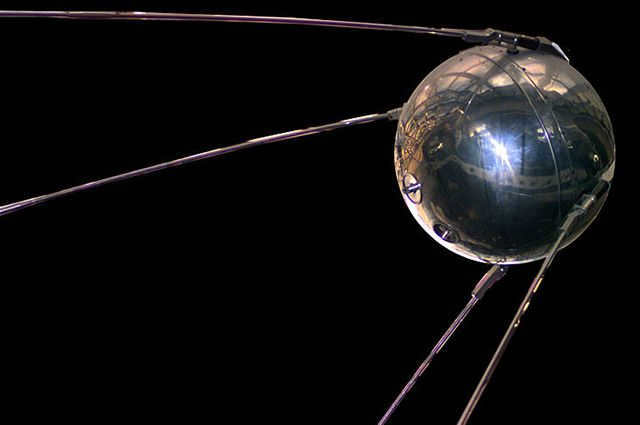
On October 4, 1957, the world was astounded to discover that the Soviet Union had successfully launched the very first man-made satellite. This country, which had only recently emerged from the devastating war, had achieved a groundbreaking feat by venturing into the realm of outer space.
A clash of brilliant minds
The race to develop a satellite had begun long before this historic day. It so happened that two visionary and ingenious engineers, Wernher von Braun from Germany and Sergei Korolev from Russia, were independently working towards the same objective. Wernher von Braun drew inspiration from the concepts put forth by German space travel theorist, Hermann Oberth, while Korolev built upon the theoretical foundations laid down by Konstantin Tsiolkovsky. by Konstantin Tsiolkovsky..
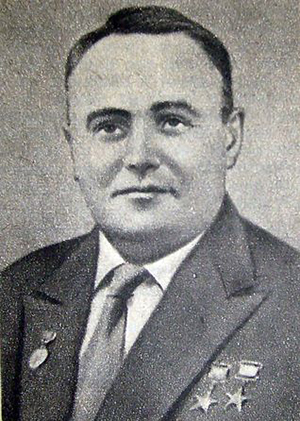
In the 1930s, Wernher von Braun embarked on his journey towards his goal, finding support from the military who recognized the potential of rockets as a new weapon of destruction. Meanwhile, in the Jet Propulsion Research Group (GIRD), Korolev enjoyed the backing of Marshal Tukhachevsky.
However, this connection with the disgraced Marshal would soon prove to be Korolev’s downfall, as being associated with an “enemy of the people” provided the perfect excuse to send him to the Gulag.
While von Braun continued to design rockets in Germany, Korolev struggled to survive in the labor camps.
It was this stark contrast that made the leadership of the German engineer so apparent: his “Fau-2” had already instilled fear in London, while Korolev was still emerging from his imprisonment. The country needed his talent as a new threat loomed on the horizon.
Von Braun became a war prize after Germany’s defeat in World War II, and his work on the “Faue-2” was handed over to the Americans. Soviet scientists, including Sergei Korolev, were left with meager resources to study.
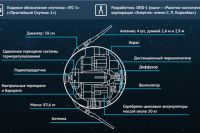
The decline of American technology
The victory of the USSR in the initial stage of the space race might not have occurred if it hadn’t been for President Harry Truman of the United States. President Harry Truman, after testing the atomic bomb on Hiroshima and Nagasaki, aimed to put an end to the perceived communist threat. It is well-known that he drafted ultimatums to the Soviet government and actively developed plans for atomic bombardment of the Soviet Union.
The USSR, surrounded by hostile military bases, was compelled to seek a suitable response. In successfully creating its own atomic bomb, the country’s leadership was then faced with the challenge of delivering it to its intended target.
This is the point where rocket technology and Sergei Korolev proved to be invaluable. The nation required not just a satellite, but a weapon, and yet the brilliant scientist managed to merge the two.
Meanwhile, in the United States, Wernher von Braun was still working on rocket technology. However, the new leaders did not trust the former Nazi. That is why the task of developing the first American satellite, which would have been the first in history, was not assigned to him, but to a laboratory within the US Navy.
One can understand the Americans’ point of view. How could they give priority in space to a German prisoner of war associated with Himmler? After all, Himmler himself was responsible for designing missiles to bomb New York City?!
This lack of trust ultimately led to a major embarrassment. The satellite that the Americans had been promoting, along with the rocket, exploded upon launch, only managing to ascend a few centimeters.
The Ultimate Rocket: The Birth of a Legend
Meanwhile, hidden behind the secretive “Iron Curtain,” Sergei Korolev was tirelessly working on developing an intercontinental ballistic missile with the capability to strike the United States. While the military was solely focused on this objective, Korolev had a different vision in mind.
In 1955, in order to conduct test launches of this groundbreaking technology, a testing site was established in the vast Kazakh steppe near the village of Tyura-Tam. Little did the world know that this site would later become famous as the Baikonur Cosmodrome.
In the early months of 1957, the testing of the R-7 intercontinental ballistic missile, affectionately known as “the seven” due to its unique design, began. This rocket was destined to become the pioneer of all future space carriers developed within the country.
Tests were not easy, failure followed failure, and the military leadership expressed dissatisfaction. However, the determined Korolev persevered towards his goal.
Finally, on August 21, 1957, the R-7 rocket successfully completed the entire flight program. Korolev realized that the path to space was now open.
Space blitzkrieg
As early as 1954, he submitted a report to the Minister of Defense Industry, Dmitri Ustinov, proposing the creation of an artificial Earth satellite. Korolev’s rocket was designed to carry both a nuclear warhead and a payload.
The development of the first satellite, named PS-1 (the simplest satellite), began in November 1956 and by early September 1957, it had successfully completed all ground tests. The speed of progress was astounding, given the novelty and complexity of the task, but Korolev knew how to push himself and his team to the limit.
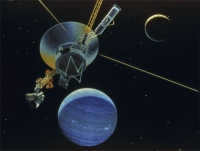
According to Georgy Grechko’s memoirs, a future cosmonaut and one of the employees of Korolev’s design bureau, the calculations for the satellite’s trajectory were performed using electromechanical counting machines that were similar in design to arithmometers. Only at the very end of the process was one of the country’s first computers connected to assist with the calculations.
On October 2, 1957, Sergei Korolev signed an order for the satellite’s flight tests and sent a notice to Moscow. However, the capital did not respond, as the country’s top leadership did not fully comprehend the significance of the event.
Since there was no explicit prohibition, Korolev interpreted it as authorization and proceeded to command the rocket and satellite to be positioned for launch.
At 22:28:34 Moscow time (19:28:34 GMT) on October 4, a launch was successfully conducted. After 295 seconds, the PS-1 and the 7.5-ton central block of the rocket were positioned in an elliptical orbit, with the apogee at 947 km and the perigee at 288 km. At 314.5 seconds, the separation took place and the satellite began transmitting its signal. The iconic sound of “Beep! Beep!” could be heard all over the world.
“Red Moon” above the United States
The declaration of the initiation of the initial man-made satellite in the Soviet Union had the result not even of a bomb detonating, but of an extensive aerial bombardment.
The globe was astounded: the nation that twelve years earlier had endured the most terrible conflict in the annals of mankind, with absolute devastation of its infrastructure and significant human casualties, was the initial to enter the cosmos.
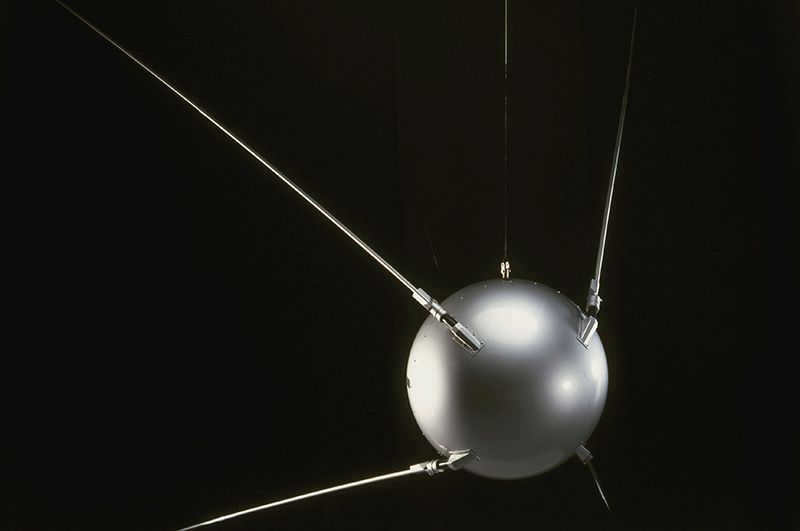
After witnessing the response from the international community, the leaders of the Soviet Union realized the immense propaganda value of their achievements in space. Nothing could serve as a better advertisement for the Soviet system than the successful launch of a satellite.
However, it must be acknowledged that not everyone was thrilled by this triumph of Soviet science. In the United States, many people were genuinely terrified. The idea of a communist object orbiting above their heads struck fear into the public, who were already in a state of hysteria due to the constant talk of the “red threat.”
It is always convenient to issue threats and write ultimatums when you know you can do so without facing any consequences. The realization that change is possible can be a sobering thought.
Nevertheless, for the majority of individuals worldwide, the satellite symbolized a new era for humanity – the age of exploring outer space. The Soviet Union’s dominance in this field was acknowledged by all.

Sergei Korolev, the mastermind behind this momentous achievement, would remain classified and unknown to the world for an additional 9 years. The Nobel Committee, desiring to bestow a well-deserved accolade upon the creator of the inaugural satellite, received a concise response from the USSR: this was a triumph of the entire Soviet populace.
Nevertheless, the Chief Designer did not fret over this matter. Laika, Belka, and Strelka, photographs of the far side of the Moon, the first human in space… all lay ahead.
Meanwhile, in the United States, Wernher von Braun found himself gravely concerned about his defeat. The American authorities had entrusted him with the task of developing a satellite, but it proved to be too late – catching up with Korolev was an impossible feat.
The initial launch of the American satellite, known as “Explorer-1,” is scheduled for February 1, 1958. However, it will lag behind the PS-1 in terms of all parameters.
In the race for space exploration, Von Braun will consistently be outperformed by Korolev, until he finally gets his revenge with the historic moon landing. Unfortunately, the brilliant Sergei Korolev will not live to witness this triumph. He will remain undefeated in his legacy.
Also check out:
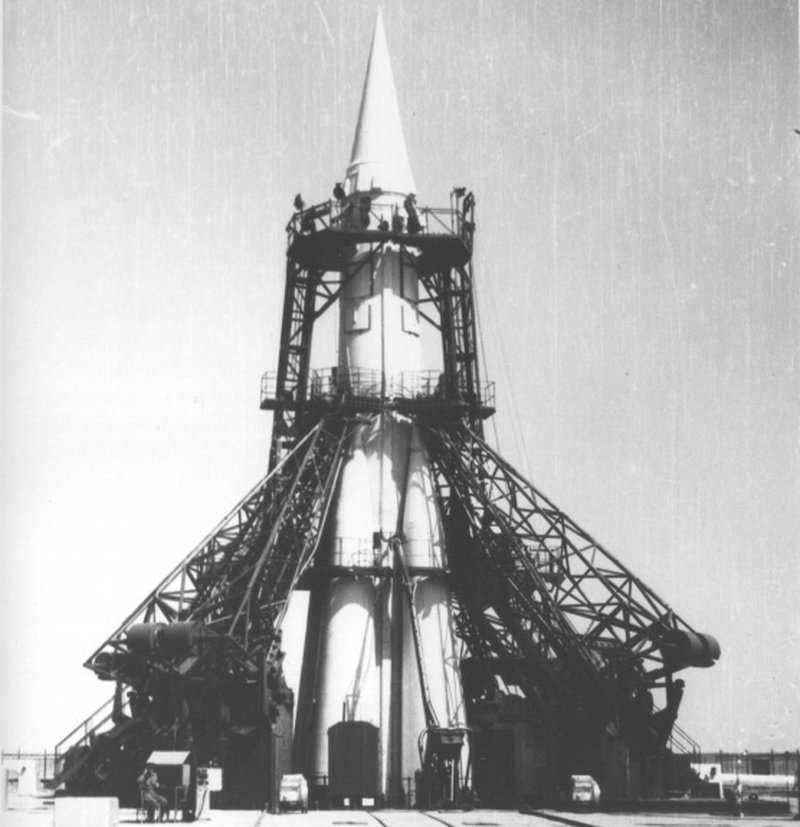
Embarking on a journey into space is no simple feat, and various nations have taken divergent paths in their pursuit. While some were able to achieve their goal on their very first attempt, others valiantly persevered through failures and setbacks. There are those who have been exploring the cosmos for years and even decades, while some have decided to scale back or altogether halt their national space programs. As we commemorate World Space Week, let us reflect on the different ways countries have ventured into the final frontier.
These days, there is occasionally a contemptuous attitude towards launch vehicles. However, it is important to recognize their significance – without a rocket, no satellite can be launched. While it may be easier to make or order a satellite for a country than to develop a complete space program, there are still several nations that have successfully built their own space programs and launched satellites using their own carrier rockets.
Soviet Union
The development of an intercontinental rocket (R-7) by the Soviet Union began in 1954. The first test launch took place on May 15, 1957, but unfortunately, it was a failure. During the launch, a fire broke out in one of the side blocks, causing significant damage and leading to its separation from the rocket just seconds before the intended separation. The second launch attempt was also unsuccessful, as the rocket failed to lift off. The third launch ended in an emergency situation, with the rocket twisting and falling apart within the first minute of flight. It was only on August 21, after the fourth attempt, that the rocket finally functioned properly. However, another setback occurred when the head part, which was supposed to contain a nuclear bomb, collapsed during re-entry into the atmosphere. Another launch was made in September, but once again, the head part was destroyed. This series of failures made it necessary to redesign the thermal protection of the warhead, putting a halt to the military testing program. However, a promising opportunity arose in July 1957 with the start of the International Geophysical Year. The United States had been discussing plans to launch the first satellite, and the Soviet Union saw this as a chance to launch their own. The R-7 rocket had the capability to launch a satellite into orbit, and a scientific satellite known as “Object D” was already in development. However, due to manufacturing delays, it was decided in February 1957 to replace the complex satellite with a simpler one.
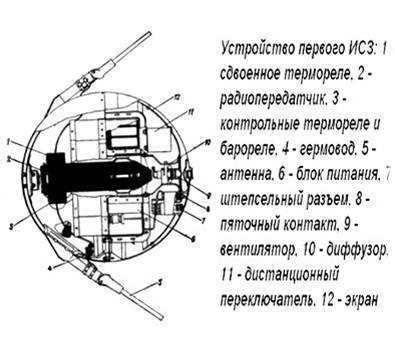
The initial launch was a triumph – during the early hours of October 5 (Moscow time) the inaugural man-made satellite was successfully placed into orbit, marking a historic milestone for humanity.
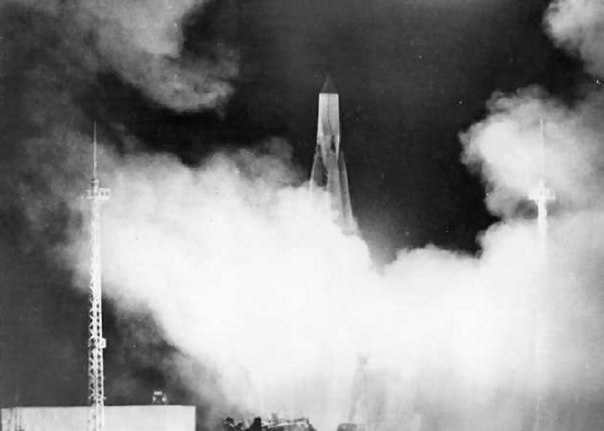
United States of America
The 1.3 kg satellite soared into the dense vegetation, and, deeming itself already in proper orbit, commenced emitting its distinctive “beeps.” The media frenzy ensued, with various monikers such as “Flopnik,” “Upsnik,” and “Kaputnik” being coined. Following this monumental failure, the government afforded von Braun an opportunity. However, it was no walk in the park for him either – the reliable and proven Redstone rocket struggled to achieve orbit. In order to rectify this, he had to incorporate up to three additional stages equipped with solid-fuel engines sourced from combat rockets. These additional stages lacked any control system, thus necessitating the ground-based spinning of the upper stage bundle containing the satellite. This spinning motion ensured the maintenance of the correct acceleration vector after separation from the initial stage. The launch video provides a clear visual of this spinning process:
The inaugural American satellite was launched on January 31, 1958. It had a weight of just 8.3 kilograms, excluding the fourth stage that failed to separate, which was exactly one-tenth the weight of the first Soviet satellite. However, despite its smaller size, it was the first to incorporate transistors and even managed to accommodate a Geiger counter as part of its scientific equipment. This remarkable device led to the discovery of the Van Allen radiation belts. Thus, the United States took an early lead in the arduous space race, though they faced numerous setbacks until the mid-1960s. Nevertheless, they remained resolute and ultimately countered Soviet successes with their own manned lunar program.
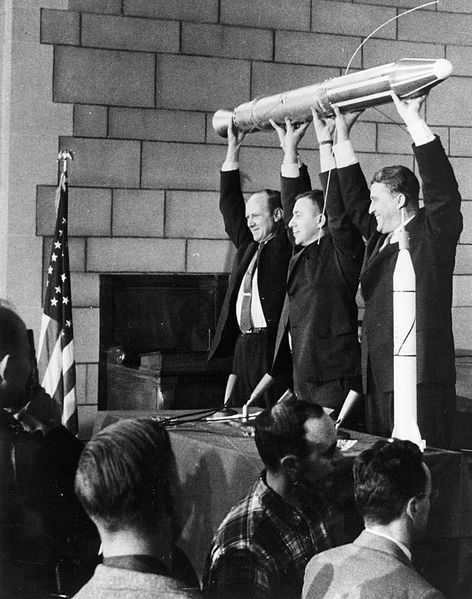
The initial victory
France
Many other nations have limited knowledge of the first satellites, and without reason. Out of nowhere, France became the third country to successfully launch its own satellite into space. The Diamant (“Diamond”) launch vehicle was developed based on the military program called “gems”:
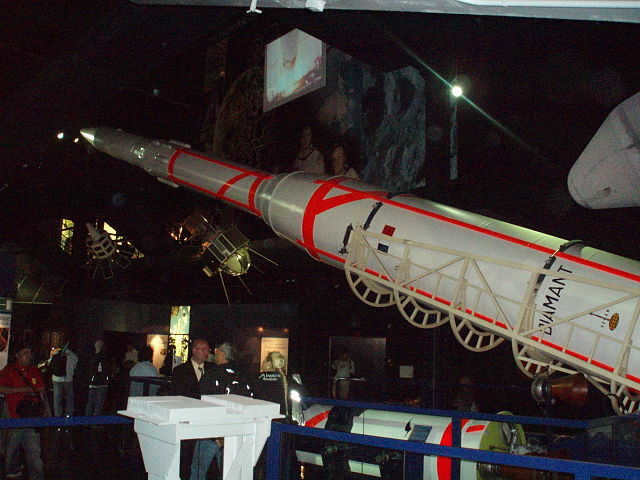
On November 26, 1965, a satellite named “Asterix” was successfully launched into orbit on its first try. This satellite, weighing 40 kg and named after a popular cartoon character, was equipped with radar response, accelerometers, and angular velocity sensors. Although it did not carry any scientific instruments, “Asterix” was placed in a relatively high orbit and continues to orbit to this day. It is expected to remain in space for several more centuries without burning up in the Earth’s atmosphere.
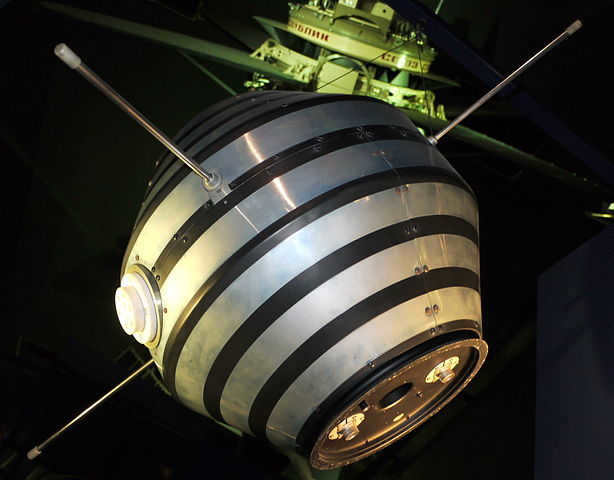
It might be more accurate to name the satellite Obelix.
France’s subsequent space program was rather peculiar, as it was the sole nation to send cats into space. The felines did not appreciate the honor and fled, some prior to the launch and others after landing….
The development of Diamant served as the foundation for the Ariane launch vehicle, and France continues to maintain a stack of space technology through its participation in the European Space Agency and the Arianespace consortium.
Japan
Japan is ranked fourth in the field of space rocket technology. Due to the close connection between space rocket technology and military rocket technology, the Japanese had to come up with a unique approach to ensure that their space rockets could not be used for military purposes. They successfully achieved this goal by developing the Lambda 4S, a four-stage rocket that lacked a control system on the first three stages. To ensure stability during acceleration, the rocket relied on passive aerodynamic stabilizers. Once the rocket left the atmosphere, a single gyroscope-based control system was deployed to guide the fourth and spent third stages along a predetermined vector. This system also spun up the fourth stage and initiated its engine.
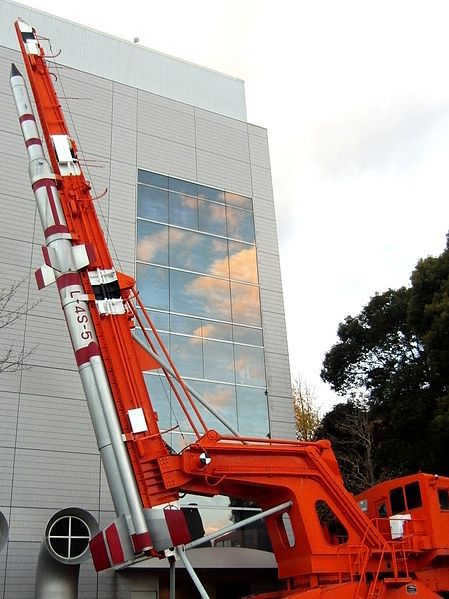
Although the initial four launches were not successful, the fifth try on February 11, 1970 proved to be a breakthrough as it successfully deployed the Osumi satellite (Ōsumi, which was named after a Japanese province) into orbit.
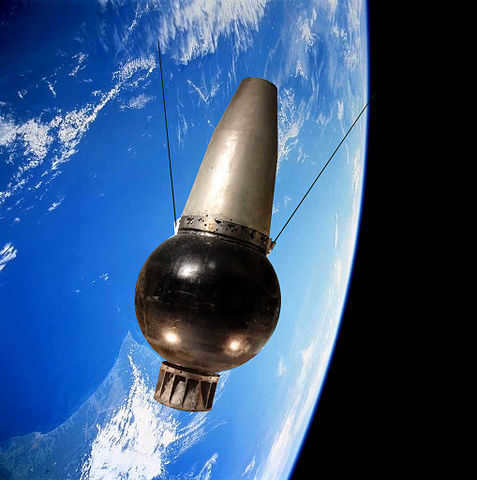
The satellite had a weight of 24 kg, carried scientific tools for measuring the ionosphere, solar wind, and cosmic rays, and disintegrated in the atmosphere as recently as 2003.
China
China followed closely behind Japan, launching their first satellite, the Red Vostok 1, into orbit on April 24, 1970, just two months after Japan’s attempt (although the 1969 test is sometimes considered a failure).
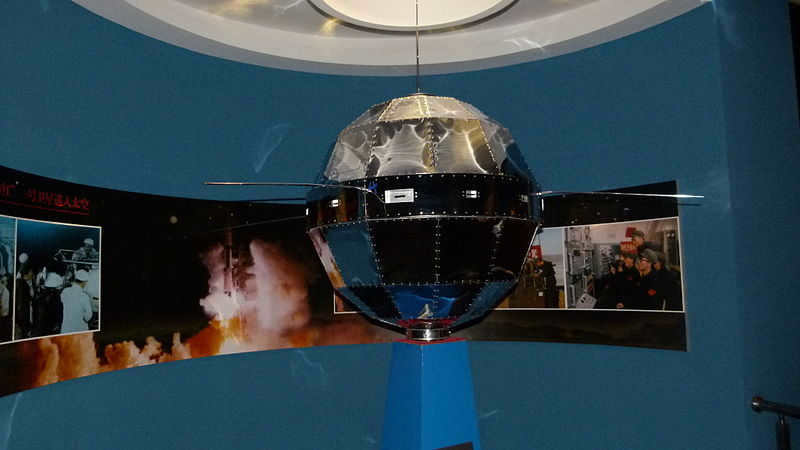
Boasting a weight of 173 kg, which surpasses the combined mass of initial satellites from different nations, the Chinese satellite possessed a unique characteristic – instead of emitting traditional “beeps,” it melodiously sang the tune “The East is flying,” which glorified Mao Tse-tung, for a remarkable duration of 26 days.
In addition, the Great Trek 1 rocket assumed the role of the progenitor for a vast lineage of Chinese spacecrafts:
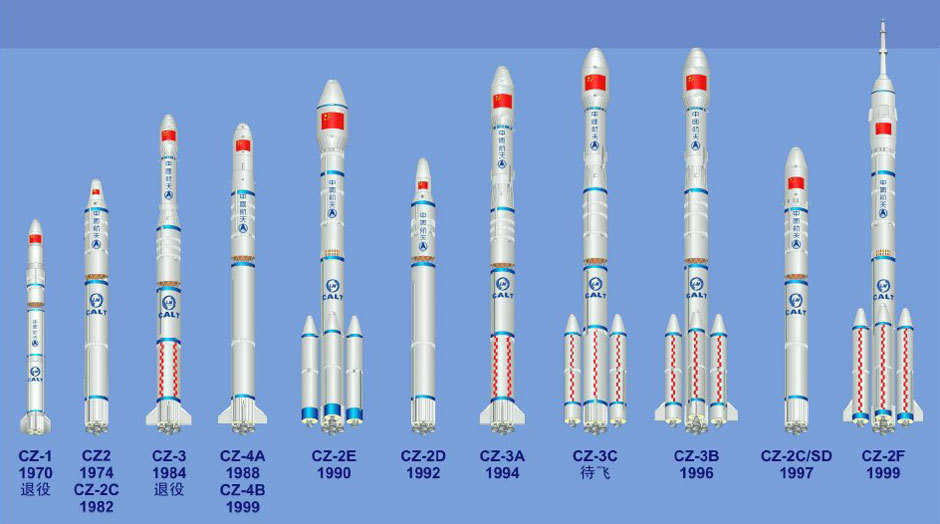
United Kingdom
On the 28th of October, 1971, the United Kingdom became the sixth nation to successfully launch its own satellite. The Prospero satellite was sent into space using a Black Arrow rocket:
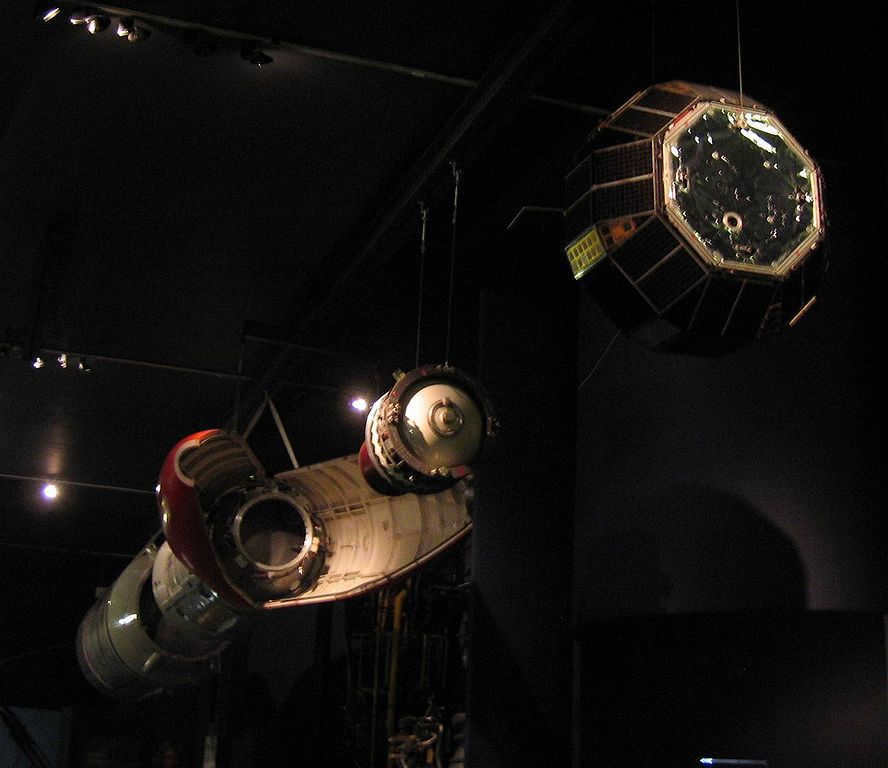
There are two stages equipped with a head fairing, followed by a third stage and a satellite.
Fortune smiled upon the British on their second attempt. Prospero was a satellite designed for testing telecommunication technologies, with only a micrometeorite detector as its scientific instrument. Although the satellite’s magnetophone malfunctioned after two years, it remained fully functional and was used for annual communication sessions until 1996. Theoretically, it could still be operational, as there were plans to reestablish contact in 2011. However, it appears that these plans were not carried out, according to available information.
The Black Arrow rocket is particularly interesting because it utilized a unique combination of fuels – kerosene and concentrated hydrogen peroxide. Unfortunately, after a single successful launch, the program for its own launch vehicles was terminated, leaving the UK as the first country to lose its independent access to space.
India
India became a member of the esteemed “space club” almost a decade later. On July 18, 1980, the country successfully launched the RS-1 satellite (named after Rohini, Krishna’s caretaker) on its second attempt. This satellite, weighing thirty-five kilograms, was specifically designed for technological purposes and, similar to the French Asterix, transmitted valuable data on the rocket’s final stage performance.
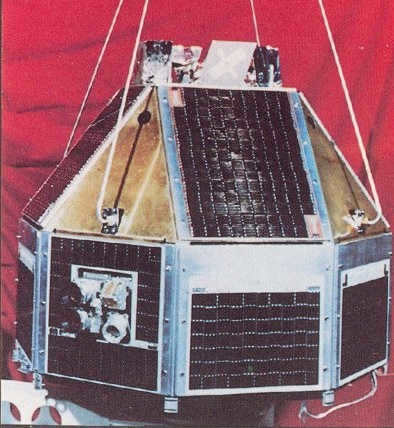
The SLV rocket, which launched the first Indian satellite, was the initial member of a relatively large group of Indian launch vehicles:
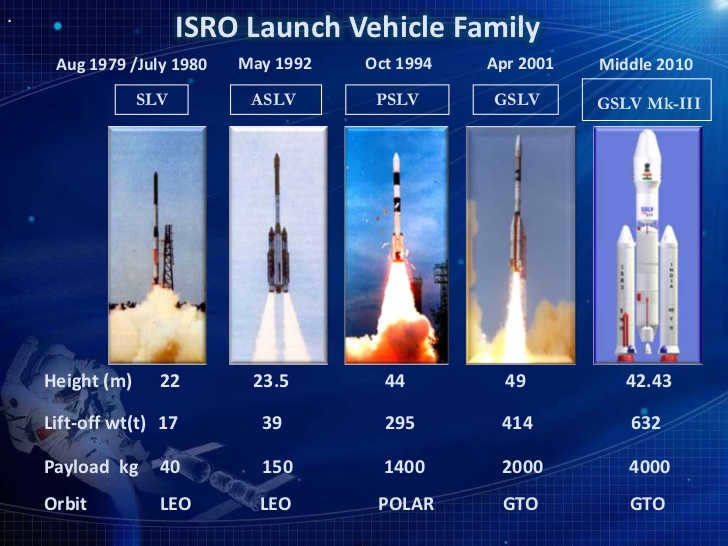
Israel
After another eight years, Israel achieved the milestone of independently launching its own satellite. On September 19, 1988, the Ofeq-1 (“Horizon-1”) satellite was successfully deployed into space using the Shavit (“Comet”) rocket, which was originally developed from ballistic missiles. While the first satellite served as a test, subsequent satellites were primarily utilized for reconnaissance purposes. Remarkably, the missile system has undergone continuous modernization and remains operational to this day.
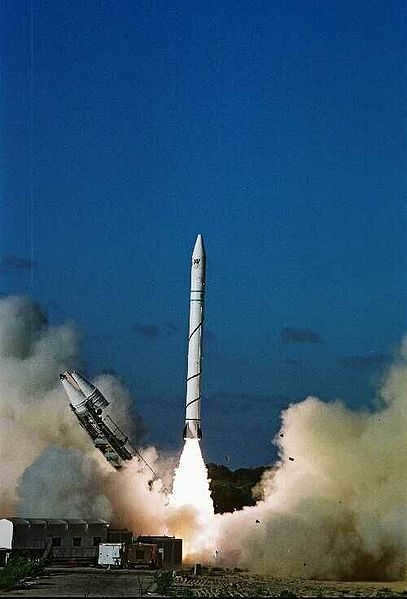
Interestingly, Israel stands out as the sole country that launches its satellites westward, in contrast to the common practice of launching eastward. By choosing an inclination of 141°, Israeli satellites sacrifice a certain amount of velocity gained from Earth’s rotation. However, this inclination enables the spent rocket stages to safely fall into the sea, avoiding any potential conflicts with neighboring countries that may arise from debris falling onto their territories. Moreover, this unique trajectory offers an additional advantage: Israeli reconnaissance satellites have the opportunity to pass over Israel and its neighboring states approximately six times a day. In comparison, U.S. or Russian reconnaissance satellites, which typically follow polar orbits with an inclination of around 90°, only pass over the Middle East once or twice a day.
Iran
After a period of two decades, Iran achieved a significant milestone on February 2, 2009, by successfully launching its inaugural satellite. The Safir-1 rocket, also known as the “Messenger,” effectively placed the Omid satellite, symbolizing “Hope,” into orbit.
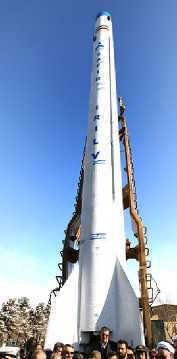
The era of cubism had commenced.
North Korea
As per the official records of North Korea, the Democratic People’s Republic of Korea (DPRK) successfully deployed its inaugural satellite in 1998. The satellite, named Kwangmyeongseong-1 (also known as Bright Star), was launched into space aboard a Baektusan rocket, which takes its name from Korea’s highest mountain. The momentous event took place on August 31, and for several weeks, the satellite orbited the Earth, transmitting melodious tunes that paid tribute to the esteemed leaders, Comrade Kim Jong Il and Comrade Kim Il Sung. However, the American imperialists did not acknowledge this achievement, as their data indicated that the solid-fuel third stage malfunctioned within its designated zone, resulting in the satellite’s failure to establish a stable orbit. The second satellite launch took place on April 5, 2009, with the North Korean satellite once again serenading the world with songs dedicated to the revered leaders. Yet, the space surveillance agents of the imperialist powers contested that the satellite did not successfully enter orbit. On April 13, 2012, an officially recognized mishap occurred during another launch attempt. However, on December 22, 2012, the Gwangmyeongseong-3 satellite was triumphantly propelled into a polar orbit by the Eunha-3 (also known as Galaxy) rocket, garnering recognition from all quarters, including the imperialists. Interestingly, this time around, the world did not bear witness to songs lauding the great leaders, as the satellite either swiftly malfunctioned or did not broadcast its signals extensively.
Over the course of 58 years, a mere 10 nations have achieved the remarkable feat of independently reaching outer space. It remains to be seen how the remaining spots in the second group of 10 will be allocated. The prestige of belonging to the esteemed “space club” does not diminish as the numbers increase.
An important notice: Fellow Samaritans! I am excited to announce that I will be visiting your city on October 8th and 9th. During my stay, I plan to explore space museums and deliver a captivating lecture at the trendy New York coffee antikafe. I encourage you all to join me for this exciting event! 🙂
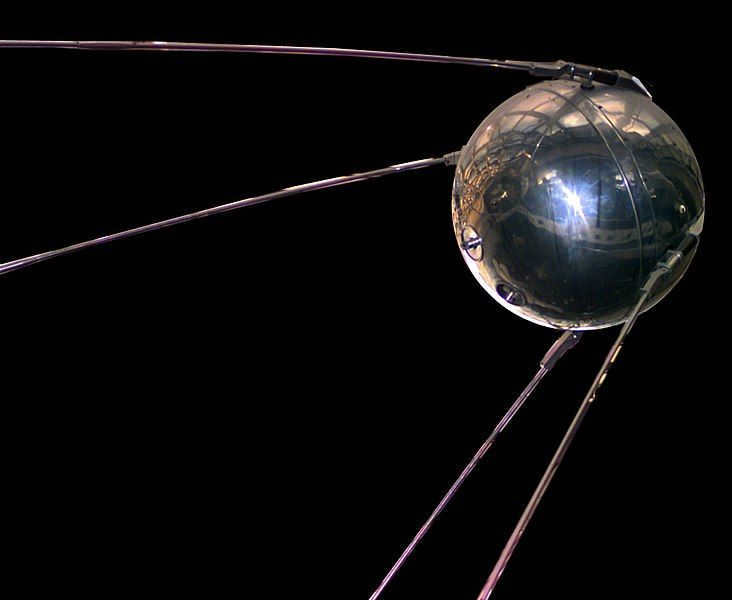
It was small and uncomplicated – nowadays referred to as “microsatellites” and launched in groups on a single rocket-carrier. The primary objective of the initial launch was to gain a competitive advantage. Additionally, the first satellite sent into space had to convince the Soviet government of its necessity.
Presently, as indicated by the German company Statista, with 4877 satellites serving various purposes in orbit around the Earth, it is difficult to imagine that not all Soviet leaders recognized the inevitability of relying on them in the near future.

Initial visions of satellites
The concept of propelling an artificial satellite through the barrel of an artillery gun proved to be unsuccessful. The extreme forces endured during the projectile’s acceleration make it nearly impossible to find a material that can withstand such intense pressures. Additionally, launching a simple iron or stone into the sky would serve no purpose. Alternatively, a jet engine could replace both the cannon and the mountain, gradually accelerating the satellite to the desired speed.
In 1869, American author Edward Hale released the narrative “Brick Moon”. The story revolves around an artificial sphere constructed from bricks, measuring 200 feet in diameter. This sphere was launched in parallel with the prime meridian and served as a navigation aid for ships at sea, allowing them to accurately determine longitude. Hale’s vision included the launch of four such “moons” to ensure global visibility. Remarkably, this pre-dated the development of GPS and GLONASS systems. The inhabitants of the brick moon communicated with Earth using Morse code, foreshadowing the use of communication satellites. Notably, brick was chosen as the material for the satellite due to its fire-resistant properties, considering the heat generated during launch.
Before the first artificial satellite was launched, theorists had numerous inquiries. They wondered about the conditions the satellite would encounter, whether the radio signal could penetrate the ionosphere, if the equipment would function properly in space, and most importantly, if a living organism could withstand the journey. On the other hand, practitioners were focused on three primary questions: which rocket would be capable of delivering the inaugural Earth satellite into orbit, how it would be designed, and where it should be launched from.

Reasons behind Korolev’s need for a new industry
In the early aftermath of the war, rocket engineering was not a top priority in the Soviet Union. The Soviet leadership, reflecting on the recent war, focused on more tangible objectives such as jet airplanes, long-range artillery, and tanks. Even communication systems and radars took precedence. However, everything changed in August 1945.
The bombings of Hiroshima and Nagasaki highlighted the fact that the USSR lacked both nuclear weapons and the means to deliver them. The American operation, codenamed “Paperclip,” was particularly concerning. As part of this operation, intelligence services brought approximately two thousand German rocket builders and the renowned German rocket scientist Wernher von Braun to the United States.
This is how Sergei Korolev envisioned the Fau-2 rocket.
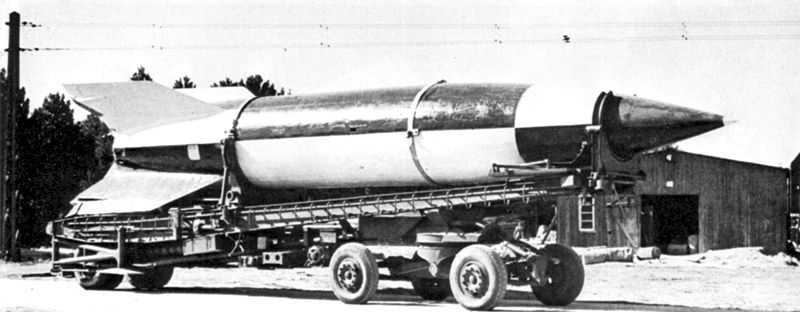
Following the war, the German Fau-2 emerged as the top missile worldwide. In September 1945, Soviet engineer Sergei Pavlovich Korolev was swiftly dispatched to Germany. Upon studying the German innovation, he promptly devised a strategy to enhance it. However, the directive was issued – not to develop a novel creation, but merely to replicate the captured specimen within Soviet manufacturing facilities.
And this particular request turned out to be quite reasonable. The level of production in the USSR was considerably low. Germany utilized a staggering 86 grades of steel solely for the manufacturing of the Fau-2, while the Soviet industry could only provide 32 grades. Germany employed 59 alloys of non-ferrous metals, whereas the USSR was only capable of producing 21; a total of 87 types of rubber and plastics were required, yet only 48 were available. The production of graphite German rudders was entirely unattainable due to the absence of the necessary technology. Thus, it became imperative to establish an entirely new industry from scratch, one that adhered to exceptionally high quality standards and utilized the most up-to-date technologies. The creation of such an industry was spurred on by the production of the Soviet missile P1, which was essentially a modified replica of the Fau-2. The most skilled engineers and workers from various industries were recruited and brought together for these clandestine ventures. As early as 1950, the R-1 missile was officially adopted for military service, and its mass production was set into motion. However, it became abundantly clear that this was not nearly enough. While the USSR had already developed nuclear weapons, the potential enemy was located in a completely different hemisphere, and the Fau-2 had a limited range of only three hundred kilometers. The prospect of launching the first artificial satellite was no longer an unattainable feat.
In the new R-2 project, Korolev suggested the integration of a separable module capable of transporting both a nuclear warhead and a scientific satellite. The client had requested a method for deploying a nuclear payload over a distance of 8000 kilometers – an intercontinental ballistic missile, essentially a weapon rather than a scientific instrument. While specialists were aware of the potential dual functionality of such a missile, capable of carrying either a lethal payload or a space satellite, this concept was not fully grasped by military officials or political leaders.

"Seven", the ultimate multitasker
In the meantime, Korolev was already aware of what his life’s main rocket should be. The Fau-2 served as a stepping stone for him, providing inspiration for his very own groundbreaking project. Collaborating with Mikhail Klavdievich Tikhonravov, he embarked on the development of a composite, or “package” carrier, which would later become renowned as the R-7. Svyatoslav Sergeyevich Lavrov, a Corresponding Member of the Russian Academy of Sciences, succinctly summed it up: “The Fau-2 and the R-7 are as different as a moped and a Formula 1 racing car”.
In order to reach speeds in space, a rocket must be designed with multiple stages. However, connecting these stages in a series can lead to a rocket that is both large and delicate. Furthermore, the issue of how the second stage will ignite its engines after the first stage runs out of fuel and separates poses a significant risk of a premature launch and potential accidents.
This is where the concept of the Korolev cross comes into play.
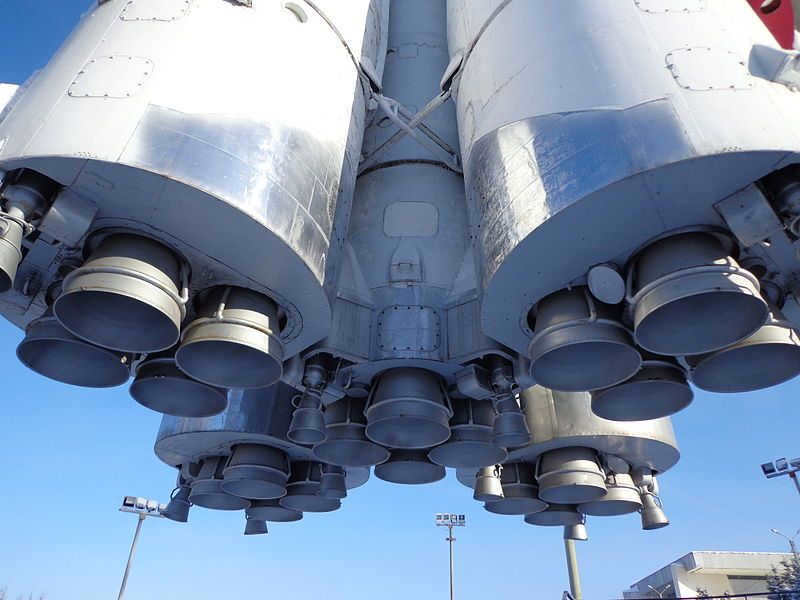
The design was referred to as the “Korolev Cross.” Korolev also replaced gas-jet rudders (the same graphite ones) with steering engines on all modules. These are just the main innovations, to fully explain everything in detail, an ordinary person would need as much time as the brilliant designers from OKB-1 took to solve them. The new two-stage intercontinental ballistic missile was named R-7, also known as “Seven” in the rocket engineers’ jargon. Its design included a detachable head unit weighing three tons and capable of reaching a range of 8,000 kilometers.

Accelerating the Launch of the Soviet Satellite: Eisenhower’s Role
After conducting tests, it became evident that discussing military applications was premature. The detachable module burned up completely during descent through the dense layers of the atmosphere. However, this setback allowed for a much-needed development of protective measures, albeit with a time constraint. Korolev saw an opportunity and proposed to Khrushchev the use of the two already constructed “seven” rockets to launch the first artificial satellite, eliminating the need for Earth re-entry.
Talks about satellites around the globe became increasingly frequent and louder. On October 4, 1954, in Rome, scientists from 67 countries declared the year 1957 as the International Geophysical Year. Simultaneously, they passed a resolution urging the exploration of launching small man-made satellites, along with their scientific instruments and the novel challenges linked to conducting experiments on these satellites, such as power supply, telemetry, and orientation.
Meanwhile, Wernher von Braun was already providing guidance to Walt Disney.
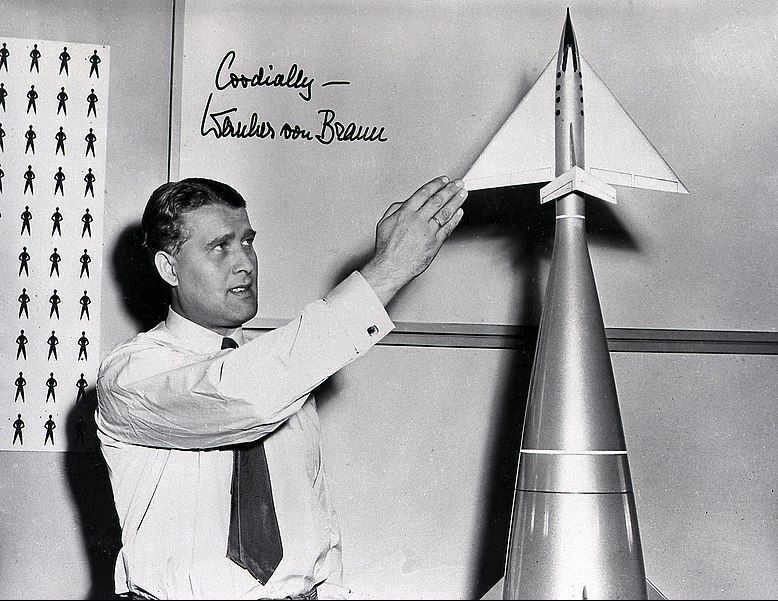
What should be placed in the initial satellite?
The designers evaluated three different types of satellites – one weighing between 200 and 300 kg, equipped with a set of research instruments, the second – the same weight, but with a life support system and space for a living organism (a dog, with a maximum height of 36 cm and a weight of no more than 6 kg). The third option involved a more modest device with minimal “equipment”. The decision had to be made regarding the contents of the first satellite to be sent into space.
Ultimately, the first artificial Earth satellite was named PS-1, or “Simplest Satellite -1”. The primary responsibility for its design was entrusted to Mikhail Klavdievich Tikhonravov, a collaborator of Korolev.
The device consisted of a round aluminum-magnesium structure made up of two 2 mm thick shells, which were connected by 36 studs. To ensure airtightness, a vacuum rubber gasket with a rectangular shape was used. The interior of the structure was filled with nitrogen gas at a pressure of 1.3 atmospheres.
Two paired pin-type antennas (2.4 m for VHF band and 2.9 m for KV) were attached to the outer shell at an angle of 70 degrees. Inside the casing, there was a radio transmitting device called D-200, a thermorelay, and a forced cooling system, which was essentially a fan. Additionally, there were silver-zinc batteries, temperature and pressure sensors, and switching devices. The total mass of the satellite was 83.6 kg, with 50 kg dedicated to power sources. The fan would turn on when the temperature exceeded +30 degrees Celsius and would turn off when the temperature dropped to +20-23 degrees Celsius. The equipment would be activated by a locking contact when the satellite was disconnected from the launch vehicle.
This is the internal composition of the inaugural satellite.
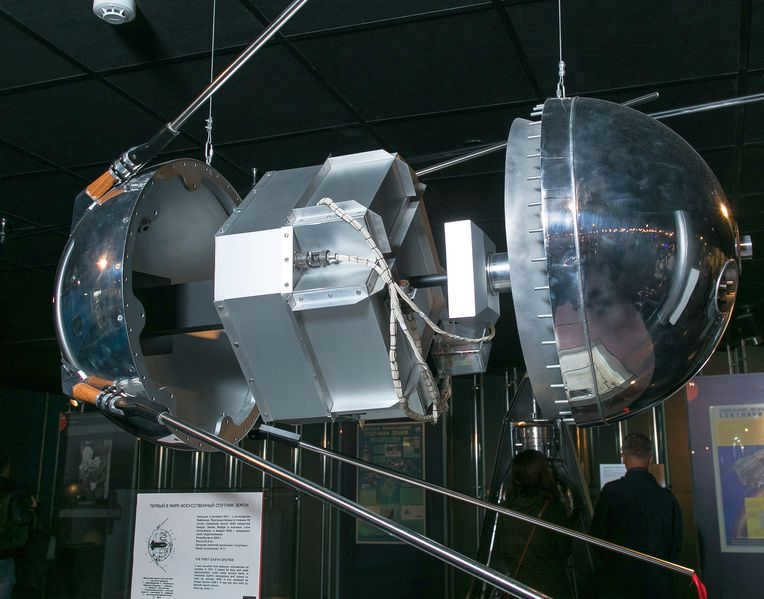
The radio station D-200, which transmitted on frequencies 20.005 and 40.002 MHz, had its frequency switching mechanism controlled by an electromechanical relay. In order to ensure reliability, the radio station utilized vacuum tubes instead of transistors, which were not yet dependable and lacked sufficient power during that era. The chosen frequencies were carefully selected to enable reception by amateur radio operators across the globe. Although professional stations required significantly less power, the first Earth satellite was designed to be detectable and even visible to all.
Destination Baikonur, month – October
The initial artificial satellite was planned to be launched from a trial location in Kazakhstan, not far from the Tyura-Tam station. The launch pad for R-7 was already equipped there, much more complex than the launch table for R-1 and R-2. The spot was perfect, as there were no settlements nearby, the rockets would take off over uninhabited terrain, and the area allowed for practically limitless expansion. Now it is internationally recognized as Baikonur, although the village of Baikonur is situated three hundred kilometers away. The future USSR pilot-cosmonaut Georgy Mikhailovich Grechko participated in the calculation of the trajectory of PS-1. The launch of the first Soviet satellite was planned for October 6, 1957.
Out of the blue, news arrived that the Americans had intentions to send their own satellite into outer space, mirroring the efforts of Soviet scientists – on the sixth of October. The countdown in the space race intensified. According to Georgy Grechko’s recollection, Sergei Pavlovich Korolev promptly contacted the State Security Committee, who were unable to verify or refute this information. Korolev took matters into his own hands and made a daring decision – to launch the inaugural artificial satellite two days ahead of schedule.

Countdown: three, two, one…
On October 4, 1957, at precisely 22:28:34 Moscow time, the first man-made satellite was successfully launched, marking the beginning of a new era in space exploration. The launch was not without its share of excitement – there was a slight delay in the engine ignition of one of the first stage modules. Had it lasted just one second longer, the rocket would not have been able to take off. However, the engine finally “coughed” to life, and in just 4 minutes and 55 seconds, the rocket entered Earth’s orbit. Just 20 seconds later, the satellite separated from the second stage, and its transmitter began functioning.
The surprising rise to stardom of Academician Sedov
Although the PS-1 scientific module produced limited results, its launch was a momentous occasion. The module had a significant propaganda impact, captivating the entire world with space fever. Radio enthusiasts worldwide intercepted signals from the new celestial body, listening to the ethereal sounds of “beep-beep” like music. Throngs of people gathered on the streets to catch a glimpse of the satellite, even though they could only see the second stage module flying nearby. The satellite itself appeared as a sixth magnitude star, barely visible to the naked eye. A month later, on November 3, Sputnik-2 was launched into space, carrying a “passenger” – a dog named Laika. Unfortunately, this launch marked the first casualty in the conquest of space, as Laika died within five hours of orbiting the Earth.
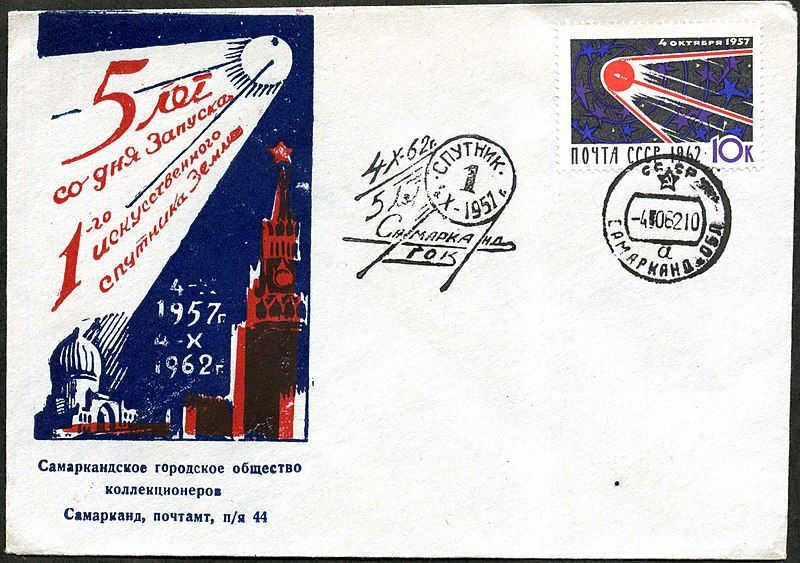
When the first spacecraft was sent into space, it brought great honor to Soviet science and led to two injustices against Sergei Pavlovich Korolev. The creator of the spacecraft had hoped to be immediately nominated for the Nobel Prize, but Khrushchev kept his name secret for security reasons, instead attributing the achievement to the entire Soviet people as conquerors of space. And for a long time, the world believed that the father of the satellite was Academician Sedov, who only briefly mentioned it in Copenhagen. Sometimes things happen like that.
Learn more about the launch of modern communication satellites in an article about flotillas, OneWeb, and Starlink:
Signals from outer space: Understanding how satellite internet operates

